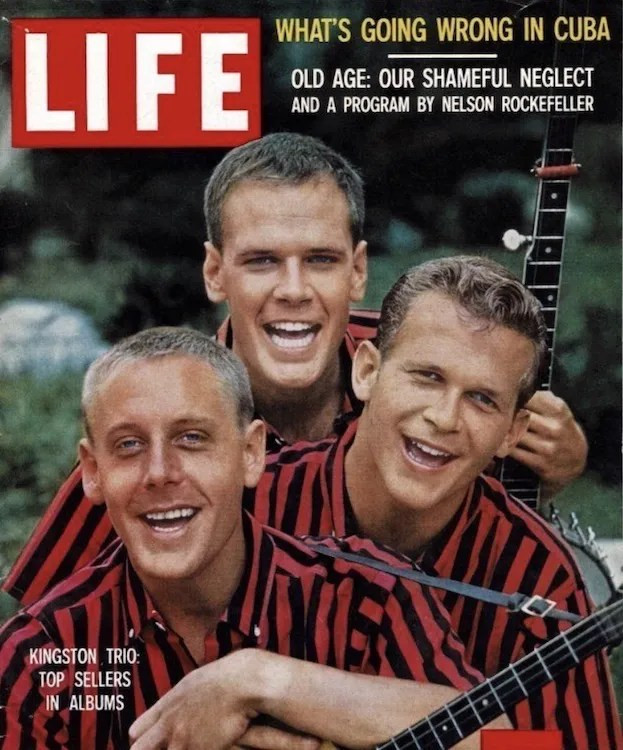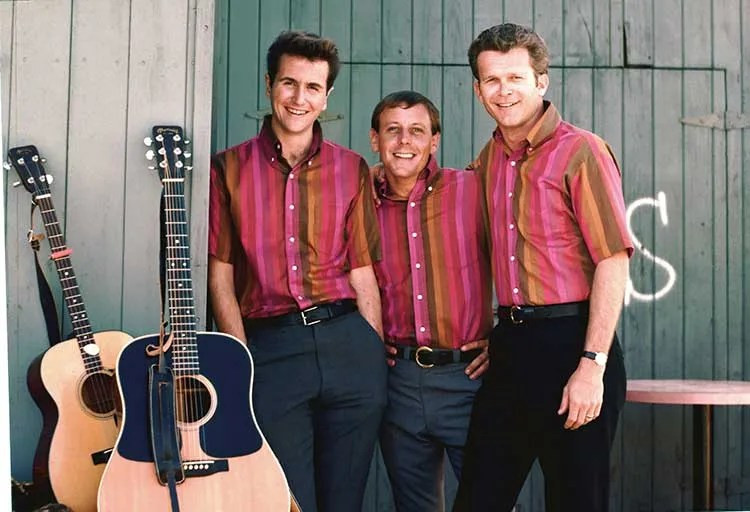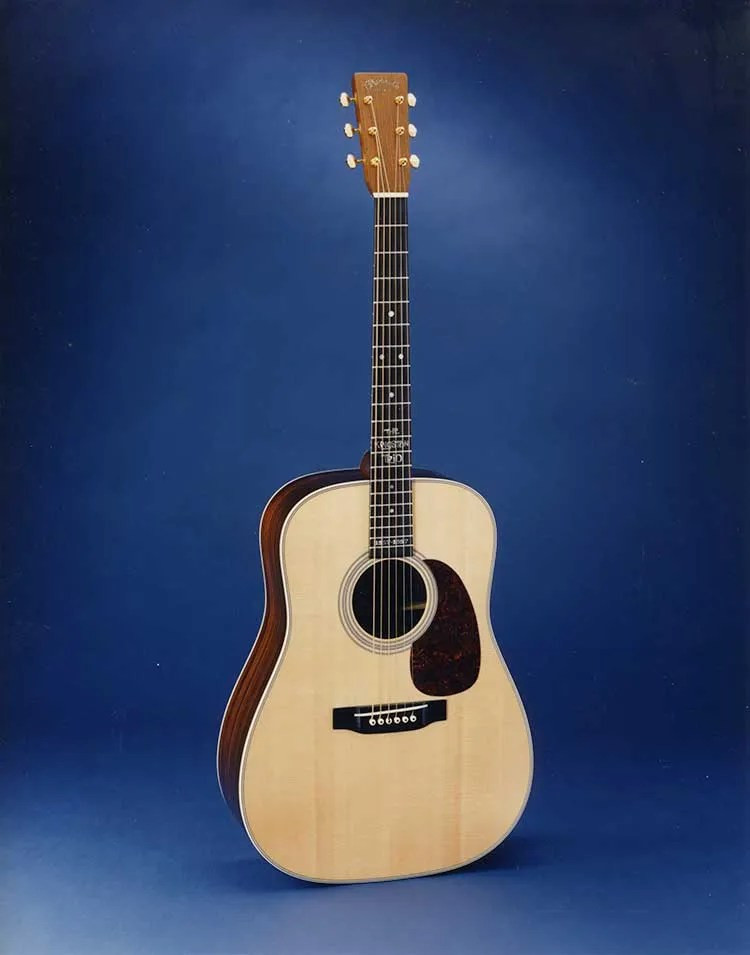For many, the crystalline harmonies and engaging narratives of Kingston Trio Songs provided the soundtrack to the late 1950s and early 1960s. Emerging as fresh-faced, clean-cut collegians, the Kingston Trio spearheaded the burgeoning folk revival movement, captivating a generation with their accessible and irresistibly catchy melodies. From transistor radios to college campuses, their music permeated the cultural landscape, leaving an indelible mark on American music history and influencing countless artists who followed. This exploration delves into the enduring appeal of Kingston Trio songs, their historical significance, and the legacy they continue to inspire.
The Dawn of the Folk Revival and the Kingston Trio Sound
The mid-1950s witnessed a shift in the musical landscape. While rock and roll was gaining momentum, a parallel movement was stirring, rooted in the rich traditions of folk music. Pioneers like Pete Seeger and groups like The Weavers had laid the groundwork, but the Kingston Trio injected a youthful energy and polished professionalism that broadened folk music’s appeal to a mainstream audience.
Formed in the vibrant San Francisco Bay Area, the original lineup of Bob Shane, Dave Guard, and Nick Reynolds possessed a unique chemistry. Shane’s resonant baritone and rhythmic guitar, Reynolds’ soaring harmonies and tenor guitar/percussion, and Guard’s musical intellect and instrumental versatility coalesced into a signature sound that was both sophisticated and inviting. Their music resonated with a generation seeking something different from the prevailing rock and roll fervor, offering instead thoughtful lyrics, intricate vocal arrangements, and the warm tones of acoustic instruments.
 Kingston Trio original lineup (L-R): Bob Shane, Dave Guard, Nick Reynolds performing folk songs, showcasing their signature striped shirts and acoustic instruments.
Kingston Trio original lineup (L-R): Bob Shane, Dave Guard, Nick Reynolds performing folk songs, showcasing their signature striped shirts and acoustic instruments.
Their debut album, aptly titled The Kingston Trio, released in 1958, catapulted them to national fame. Propelled by the runaway success of “Tom Dooley,” a haunting ballad of a condemned Confederate soldier, the album dominated the charts for an astonishing four years. “Tom Dooley,” with its simple yet powerful melody and poignant narrative, became an instant classic and remains one of the most recognizable Kingston Trio songs.
Chart-Topping Hits and Album Dominance
The Kingston Trio’s initial success was no fluke. They followed up with a string of hit singles and albums that solidified their position as folk music icons. Their second album, At Large (1959), further cemented their popularity, featuring another signature song, “M.T.A.” This clever and catchy tune, with its memorable intro and relatable story of a man trapped on the Boston subway, showcased the Trio’s ability to blend traditional folk elements with contemporary themes and humor.
Kingston Trio songs became ubiquitous. Tracks like “Scotch and Soda,” “A Worried Man,” “Tijuana Jail,” and “Sloop John B” became staples on radio airwaves and college campuses across America. Their albums consistently reached the top echelons of the Billboard charts. Between 1958 and 1963, they remarkably placed 13 albums in the Top Ten, with five reaching the coveted Number One spot. This unprecedented album chart performance underscores the immense popularity and cultural impact of Kingston Trio songs during this era.
Beyond the Hits: The Depth of the Kingston Trio Repertoire
While hit singles like “Tom Dooley” and “M.T.A.” brought them mainstream recognition, the depth of the Kingston Trio’s repertoire extended far beyond their chart-toppers. They were masterful interpreters of traditional folk songs, bringing fresh arrangements and renewed interest to timeless tunes. Their albums were treasure troves of folk gems, encompassing a wide range of styles and themes, from sea shanties and work songs to ballads and humorous narratives.
Kingston Trio songs often featured intricate vocal harmonies, showcasing the seamless blend of Shane, Guard, and Reynolds’ voices. Their arrangements were characterized by a meticulous attention to detail, utilizing the interplay of acoustic guitars, banjo, and tenor guitar to create a rich and dynamic sonic tapestry. This dedication to musical craftsmanship elevated folk music to a new level of sophistication and accessibility, paving the way for future generations of acoustic musicians.
The Kingston Trio’s Enduring Influence on Music
The impact of Kingston Trio songs and their overall artistry resonates far beyond their immediate success. They are widely credited with popularizing folk music to a mass audience, igniting a folk revival that swept through the late 1950s and early 1960s. Their influence can be heard in the music of countless artists who emerged in their wake.
Many prominent musicians have cited the Kingston Trio as a formative influence, including an impressive roster of names such as Bob Dylan, Peter, Paul and Mary, Crosby, Stills & Nash, The Beach Boys, Simon & Garfunkel, The Mamas and the Papas, The Byrds, and many more. Some argue that Bob Dylan’s rise to prominence might not have occurred without the groundwork laid by the Kingston Trio in making folk music commercially viable and culturally relevant.
Furthermore, the Kingston Trio pioneered the concept of the college concert tour, bringing live folk music performances to university campuses across the nation and globally. This innovation broadened the reach of folk music and established a new circuit for touring musicians.
Beyond their musical contributions, the Kingston Trio also democratized music-making. They demonstrated that one didn’t need formal conservatory training to create compelling and engaging music. Their accessible instrumentation – primarily acoustic guitars, banjo, and tenor guitar – inspired countless individuals to pick up instruments and explore the world of folk music, fostering a culture of self-played music.
Lineage and Legacy: The Kingston Trio Evolves
The departure of Dave Guard in 1961 marked a turning point, but the Kingston Trio persevered, welcoming John Stewart into the fold. Stewart, a talented songwriter and performer, brought his own unique contributions to the group, and the Shane-Reynolds-Stewart lineup continued to produce popular Kingston Trio songs such as “Greenback Dollar,” “The Reverend Mr. Black,” and “Where Have All the Flowers Gone.” This second iteration of the Trio extended the legacy of the original band, ensuring their music remained relevant throughout the 1960s.
 Kingston Trio lineup (L-R): John Stewart, Nick Reynolds, Bob Shane performing together, showcasing the second major formation of the group.
Kingston Trio lineup (L-R): John Stewart, Nick Reynolds, Bob Shane performing together, showcasing the second major formation of the group.
Over the years, the Kingston Trio name has been carried on by various lineups, demonstrating the enduring appeal of their music. While personnel changes have occurred, the core essence of Kingston Trio songs – their harmonies, storytelling, and acoustic instrumentation – has remained a constant. The ongoing performance and appreciation of Kingston Trio songs are a testament to their timeless quality and lasting impact on the landscape of American folk music.
Acoustic Guitars and the “Kingston Trio Factory”
The Kingston Trio’s phenomenal popularity had a tangible impact on the acoustic guitar industry, particularly on Martin Guitars. The demand for acoustic guitars, especially the Martin D-28, surged to such an extent that Martin faced a significant backlog, with waiting times stretching up to three years. Even the tenor guitar, exemplified by the Martin 0-18T, experienced a resurgence in popularity directly attributed to the Kingston Trio’s influence.
This unprecedented demand spurred Martin Guitars to expand its production capacity. The company built a new, larger factory in Nazareth, Pennsylvania, in 1964, a facility often referred to as “the factory that the Kingston Trio built.” This anecdote underscores the profound influence of the Kingston Trio not only on music but also on the instruments that made their iconic sound possible.
Martin Guitars further honored the Kingston Trio’s legacy by creating signature edition instruments. In 1997, for their 40th anniversary, Martin released a limited edition set of three instruments, including a D-28, an 0-18T, and a Deering banjo. Later, signature models were created for Bob Shane, Nick Reynolds, and Dave Guard, further solidifying the Kingston Trio’s place in the history of Martin Guitars and acoustic music.
 Martin Kingston Trio 40th Anniversary D-28 acoustic guitar, highlighting the special edition instrument created to honor the band.
Martin Kingston Trio 40th Anniversary D-28 acoustic guitar, highlighting the special edition instrument created to honor the band.
Conclusion: The Enduring Songbook of the Kingston Trio
Kingston Trio songs represent more than just a collection of hits from a bygone era. They embody a pivotal moment in American music history, marking the resurgence of folk music into the mainstream and influencing generations of musicians. Their timeless melodies, engaging narratives, and impeccable harmonies continue to captivate listeners today. From the mournful balladry of “Tom Dooley” to the playful energy of “M.T.A.” and the social commentary of “Where Have All the Flowers Gone,” Kingston Trio songs offer a rich and diverse tapestry of the human experience. Their legacy endures not only through recordings and performances but also through the countless musicians they inspired and the enduring love for folk music they helped ignite. The songbook of the Kingston Trio remains a vital and cherished part of American musical heritage.

